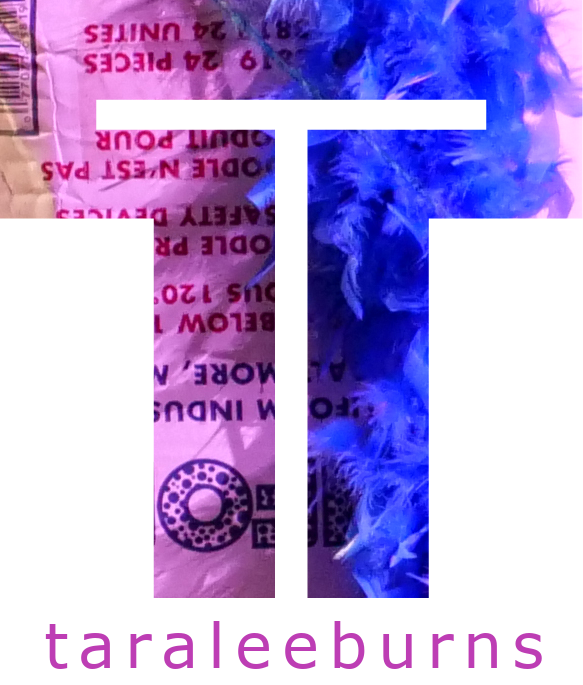Small Kindnesses was created for Spring Student Dance Concert in March 2023. I worked with the freshmen cohort to create my first work at James Madison University (JMU) with 11 dancers, 17 minutes, and projected abstractions of the live performance. Creating this work for the EJM Theater offered a valuable opportunity to explore the intersection of technology, choreography, and pedagogy in a new institutional context. It also served as a catalyst for initiating broader conversations about performance technology within the JMU community.
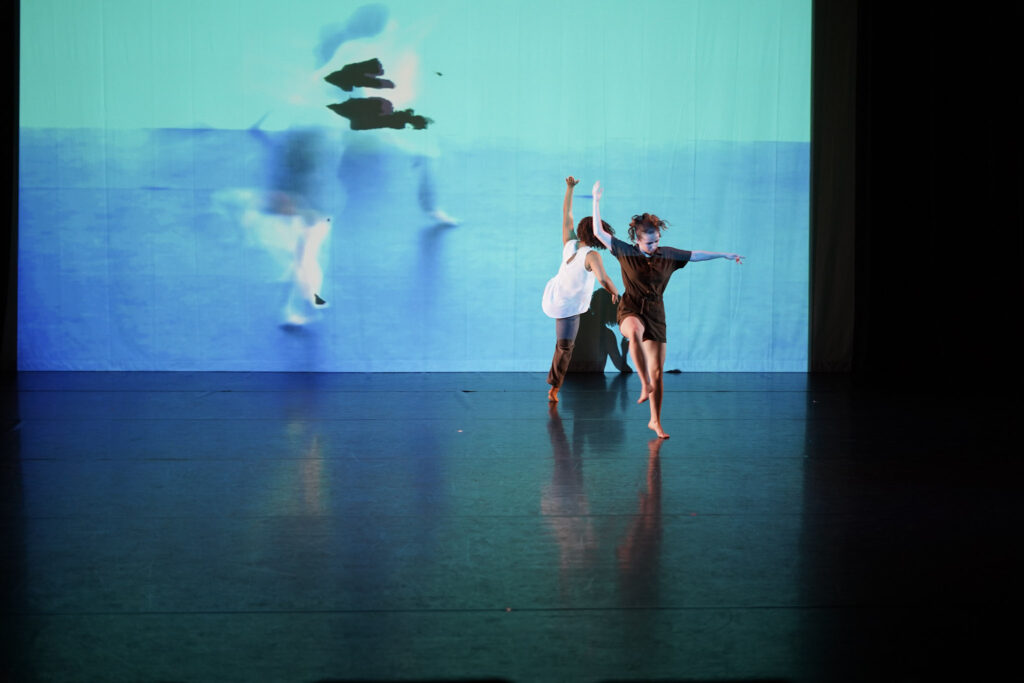
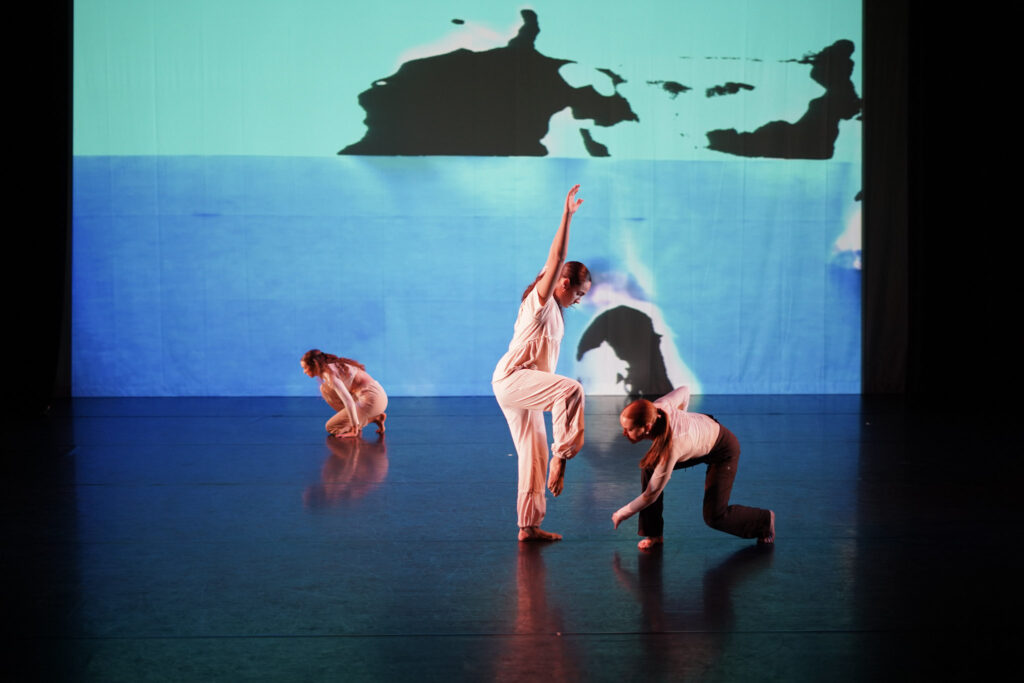
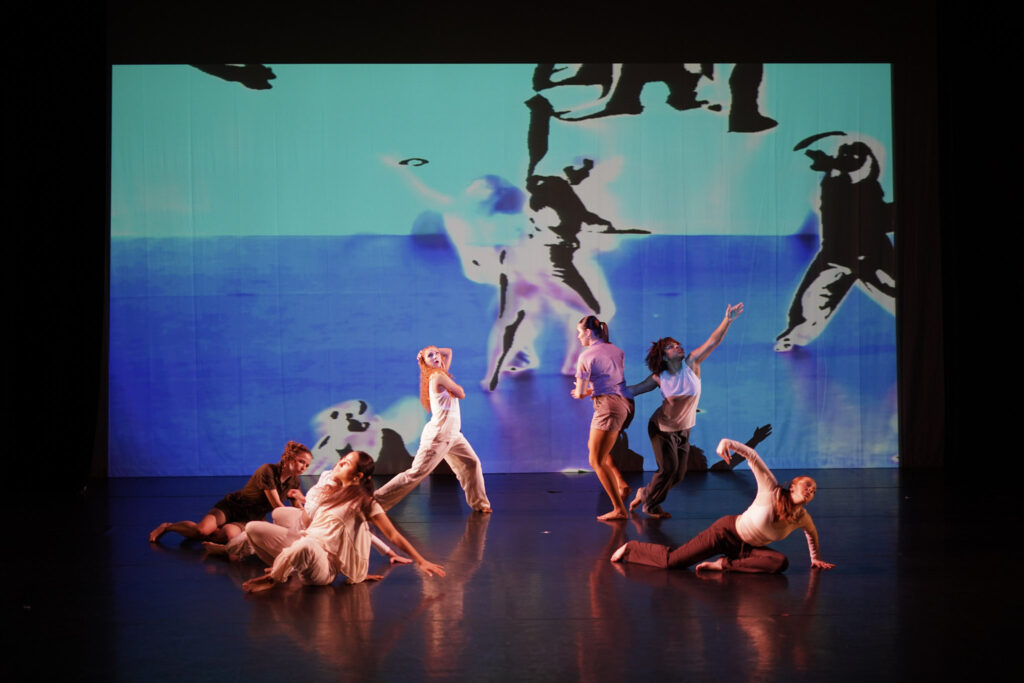
“It was something I had never seen before…”
Students from DANC 215 – The Dance Experience
“…the spring student dance concert at JMU provided an exceptional display of talent and creativity, with the opening piece standing out as a particularly memorable and thought-provoking highlight. Through its innovative choreography, intimate moments, and use of technology, the performance pushed the boundaries of traditional dance, leaving a lasting impression on the audience.”
INSPIRATION:
The work was inspired by a poem of the same name by Danusha Lameris (below). I think it resonated with me because it was my first year in a new state, home, department, and university—and I was hoping it would also connect with the freshman class, who might have been feeling the same way. I felt in some small way, I was letting them into the fact that I cherish the small things.
Small Kindnesses by Danusha Lameris
I’ve been thinking about the way, when you walk
down a crowded aisle, people pull in their legs
to let you by. Or how strangers still say “bless you”
when someone sneezes, a leftover
from the Bubonic plague. “Don’t die,” we are saying.
And sometimes, when you spill lemons
from your grocery bag, someone else will help you
pick them up. Mostly, we don’t want to harm each other.
We want to be handed our cup of coffee hot,
and to say thank you to the person handing it. To smile
at them and for them to smile back. For the waitress
to call us honey when she sets down the bowl of clam chowder,
and for the driver in the red pick-up truck to let us pass.
We have so little of each other, now. So far
from tribe and fire. Only these brief moments of exchange.
What if they are the true dwelling of the holy, these
fleeting temples we make together when we say, “Here,
have my seat,” “Go ahead—you first,” “I like your hat.”
MUSIC COLLABORATION:
Early in the semester, I was approached by Toby Twinning (JMU Music Director) with the opportunity to collaborate with Professor Sue Barber from the School of Music. I welcomed the invitation, and from the four musical selections offered by Sue, we chose Tombeau de Couperin by Ravel—a sophisticated and nuanced four-movement composition. The final performance, nearly 17 minutes in length, was brought to life by a live student quintet, elevating the work with its immersive, real-time musicality.
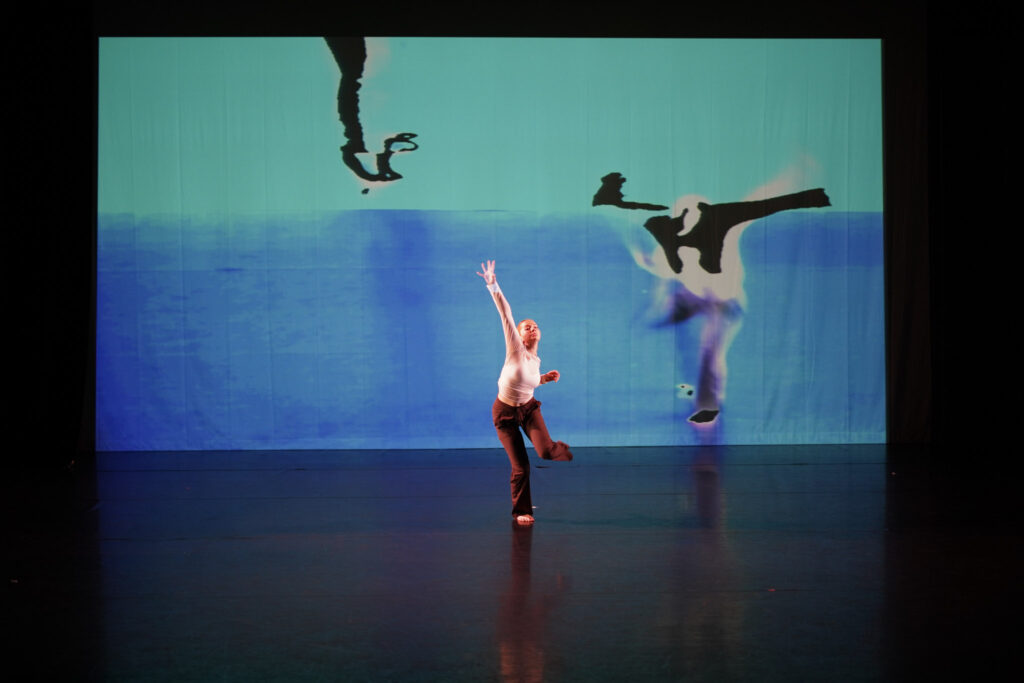
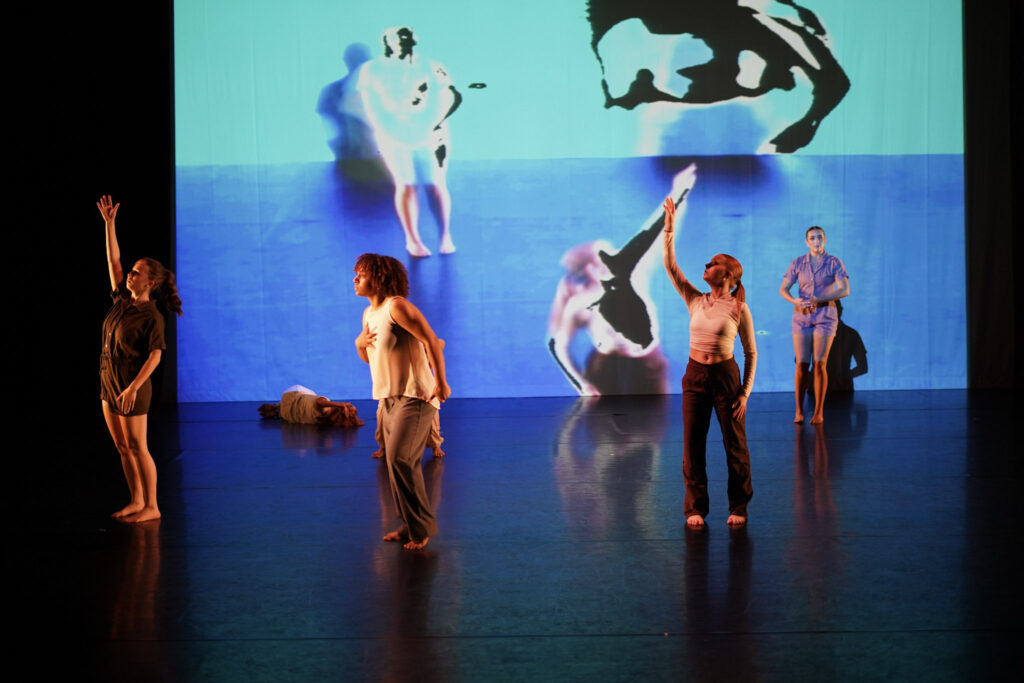
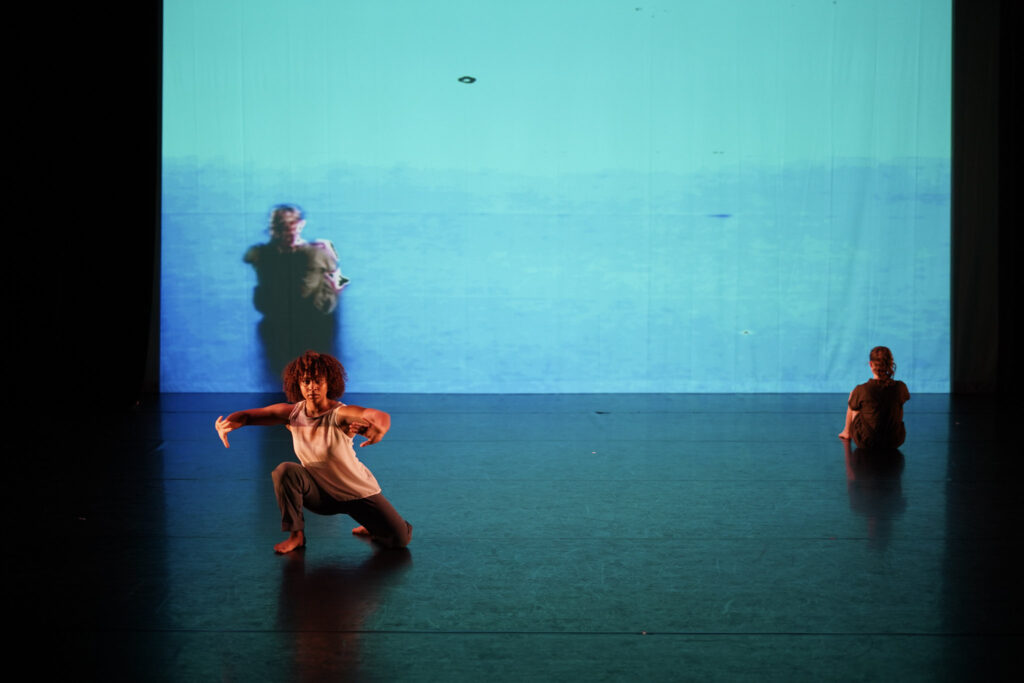
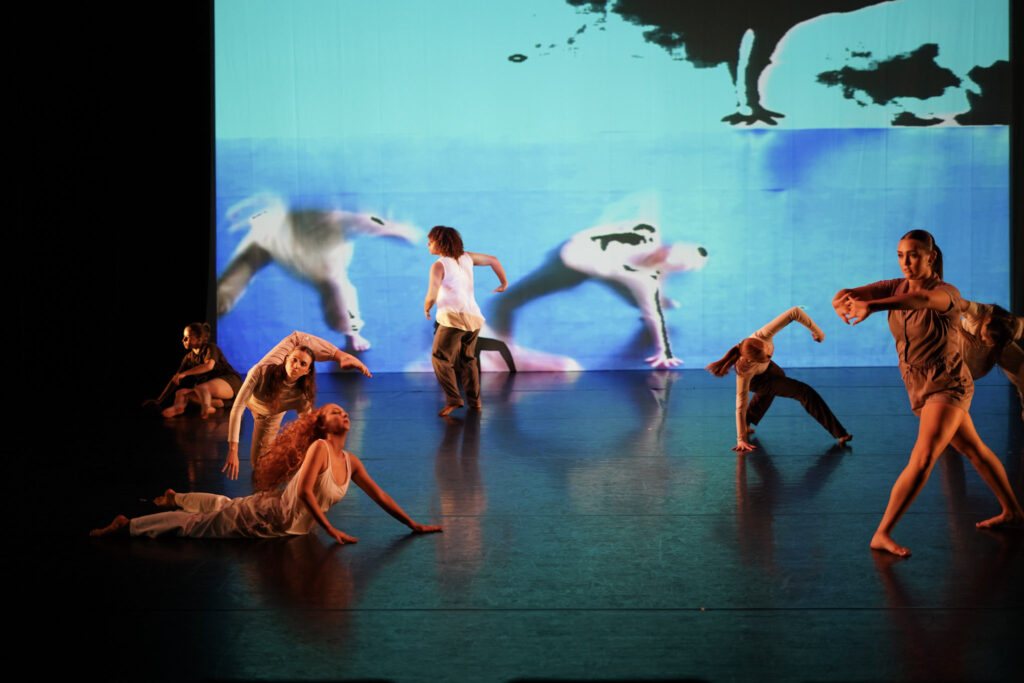
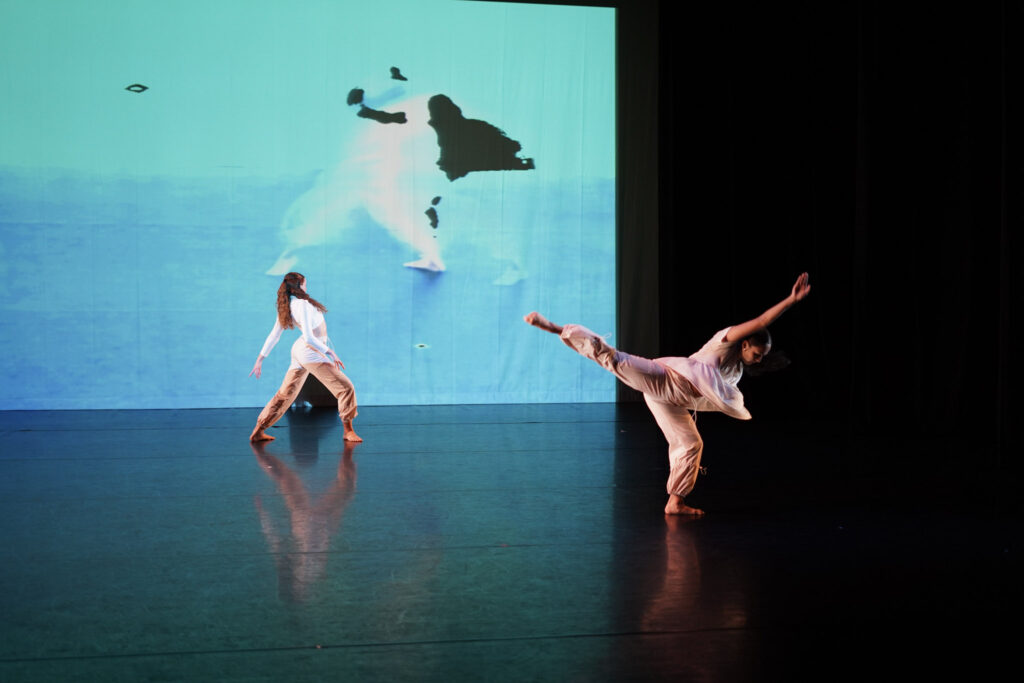
PROJECTION DESIGN:
The projections were created using Isadora live projection software in conjunction with the Tricaster computer and streaming camera. My creative methodology often involves using projection as a choreographic collaborator—technology as an equal voice in the narrative development of a work. However, the architectural constraints of the EJM proscenium space required a rethinking of my process. Rather than an evolving visual landscape, I opted for a singular, cohesive projection “look” across the full 17-minute piece. This decision was also influenced by student feedback during previous projection workshops, where several remarked that “projections take away from the dance.” I approached this as a design challenge: how might projection amplify rather than compete with the live body?
To that end, I utilized a manipulated live video feed of the dancers—delayed, colorized, and blurred—to create an abstract visual echo of the performance in real time. The feed offered a closer perspective of individual dancers than a traditional wide-angle stage view, drawing attention to smaller gestures and quieter moments that might otherwise be overlooked. This approach aligned with the piece’s central theme of “small kindnesses,” offering a visual metaphor for intimacy, attention, and care.
Despite intentionally simplifying the projection design, several technical hurdles remained. The projector, computer, and Tricaster camera operated at conflicting resolutions, which limited the scale of the projected image—even with the enhanced equipment. Moreover, because the design relied on real-time interaction with live performers, it required dedicated rehearsal time on stage with full projection capability. Unfortunately, due to scheduling constraints, that time was limited, and some moments in the final performance were left to improvisation and chance.
